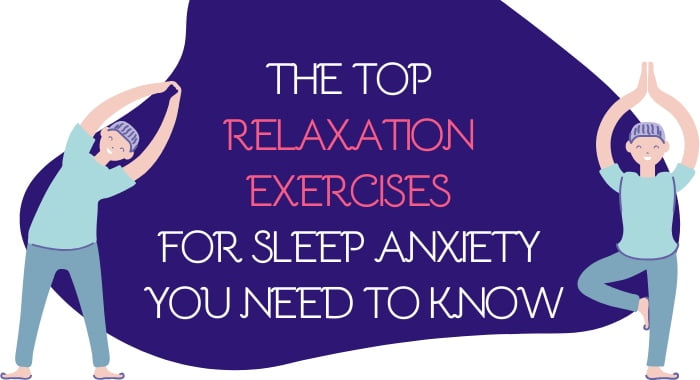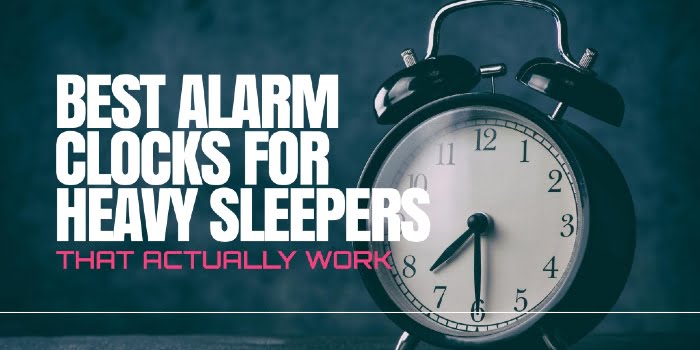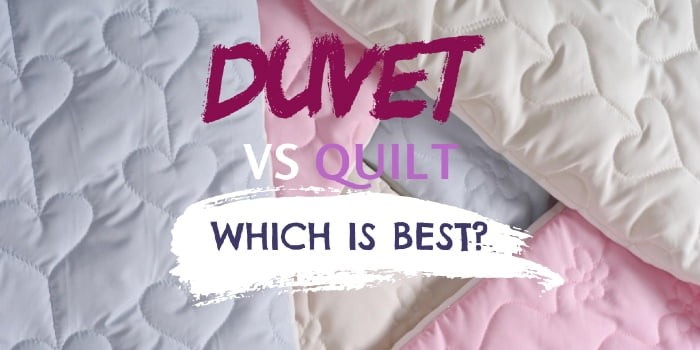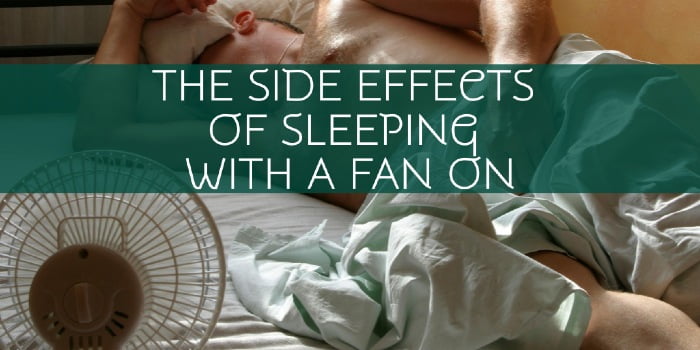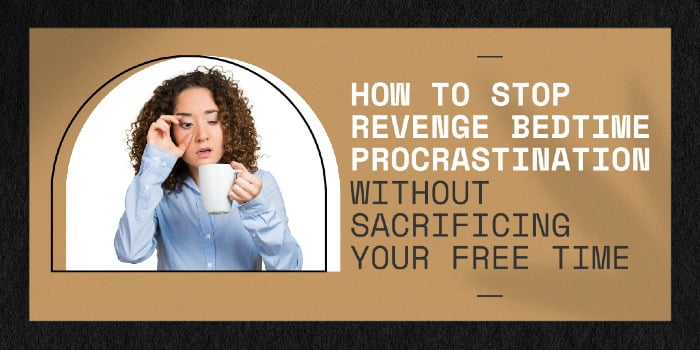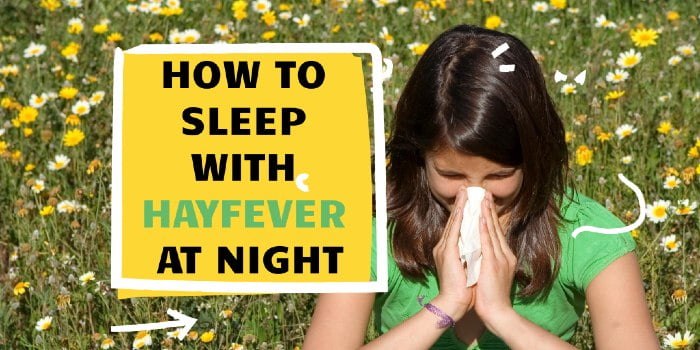Sleeping when you’re anxious is no walk in the park. It’s hard to just let your body drift away when your mind becomes an anchor of negative thoughts.
It’s a bit like a vicious cycle. The more anxious you are, the less you will sleep. The less sleep you get, the more anxious you will become. It’s just what everyone needs while living through a global pandemic right?
If you’re struggling to sleep because of anxiety, you might have a sleep anxiety disorder. But the good news is that you can help overcome the sleepless nights with relaxation techniques. To help get you started, we created a list of the best relaxation exercises for sleep anxiety with step-by-step instructions for you to follow straight away.
Ready to get started?
What is sleep anxiety disorder?
Sleep anxiety disorder is exactly as it sounds. It’s a sleep disorder caused by anxiety, meaning that you struggle to get or stay asleep.
Anxiety causes a variety of symptoms, including:
- Racing thoughts;
- Heightened emotions and senses;
- A feeling of being overwhelmed;
- Heart palpitations;
- High blood pressure;
- Bursts of energy.
All of these symptoms are basically putting your body into an alert, ready for the action phase that’s counterintuitive for sleeping. Having anxiety is like someone constantly holding down the ‘fight or flight’ button in your body.
If someone is going through a high anxiety period, it can trigger insomnia. In most cases, the insomnia is acute and will fade in a few weeks.
What are the symptoms of sleep anxiety disorder?
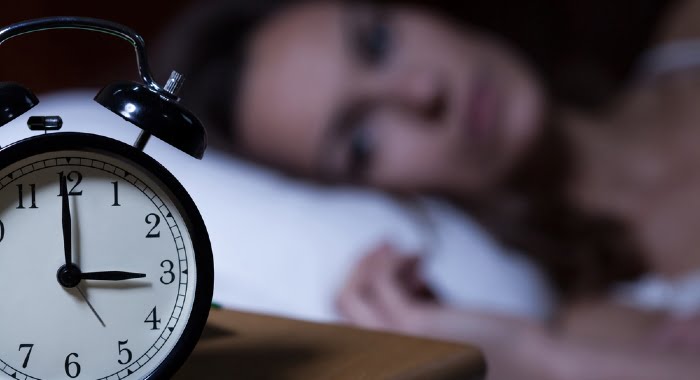
If you’re suffering from anxiety, you might be suffering from a sleep anxiety disorder if you have the following symptoms.
- Difficulty falling or staying asleep;
- Waking very early;
- Feeling unrested and unrefreshed by sleep;
- Irritability or mood swings;
- Feelings of being overwhelmed;
- Feeling unmotivated;
- Trouble with concentration or remembering things;
- Lack of energy.
People can also suffer from anxiety attacks when sleeping, waking them up in the middle of the night. 50-70% of people who suffer from panic disorder have had at least one panic attack at night.
How do you fall asleep with a sleep anxiety disorder?
If you’re feeling anxious, you need to get your body into a calm state before you sleep. This may sound impossible, but there are relaxation exercises that you can do that will destress your body and help clear your mind ready for sleep.
According to recent studies, these relaxation techniques have proven effective for managing stress and improving sleep. But as an extra cherry on the top, these exercises can also be used to help:
- Reduce chronic and intermittent pain;
- Ease nausea;
- Lower blood pressure;
- Quit smoking;
- Make people feel more alert in the day.
Sound great? Read on to find out how to do them.
The best relaxation exercises for sleep anxiety
We’ve listed the best relaxation excesses for sleep anxiety that you can use. For best effect, we’d recommend testing them for at least 2 weeks or more to see if they’re having an impact on your night.
Just remember that not every single one of these exercises will work for you, you need to trail and pick the ones that help you the best. Everyone is different after all.
1. Deep breathing exercises
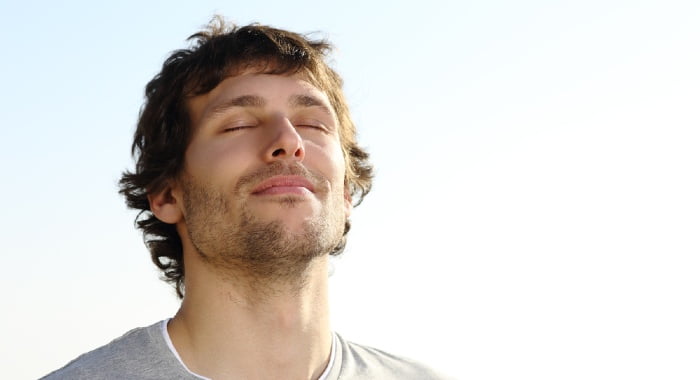
Focusing on your breath is one of the biggest and most effective relaxation exercises. This is because it’s a powerful way to reduce muscle tension, slow your heart rate, blood pressure, and metabolism. In addition, deep slow breathes are a great way to snap out of troubling thoughts and ground yourself back in the moment.
- Close your eyes and notice your breathing. Don’t try and immediately alter your breathing pattern. At first, just notice it.
- Feel the air enter and leave your nose or mouth, and feel your chest expand and compress as you breathe.
- Visualize the flow of air as it passes through your mouth, airways, down into your belly, and back out again.
- Mentally examine your body. Notice how you’re feeling and what muscles feel tight or tense.
- Focus on your tense muscles and as you exhale, imagine all the tension being let go. Allow your body to relax and sink into the bed as you focus on your breathing.
Lose your concentration and find your mind wondering? No worries. Don’t beat yourself up about it, as it’s natural. Just accept that it’s wandered, let go of the thought you’re on and go back to the breath.
If you’re feeling stressed or anxious in the day, stopping to take a few deep breaths is a great way to help manage these feelings. It will also help reinforce the habit, making concentrating on your breathing at night easier and more natural.
Humming can also have the same calming effect as deep breathing while making your face, neck, and shoulder muscles relax. It’s like a mini-musical massage for those that get distracted easily when trying to use the deep breathing sleep relaxation method.
2. 4-7-8 breathing
This is another breathing exercise, but with carefully controlled breaths.
Once you have gotten yourself comfortable:
- Inhale for 4 seconds;
- Hold your breath for 7 seconds;
- Exhale slowly for 8 seconds;
- And repeat.
This method of breathing is designed to slow your breathing down, releasing tension and lowing your heart and blood rate.
In addition, this breathing pattern is similar to one that your body does when you’re asleep, helping your body naturally fall into a sleeping rhythm.
3. Guided imagery
This relaxation technique is all about directing your mind in a different direction instead of the thoughts or worries that are keeping you awake. It does this by telling yourself a story or giving you an image to focus on instead, similar to a dream.
By focusing on this image, your mind can let go of other worrying thoughts and remember how relaxed and calm you felt there.
When you imagine something, your body automatically responds. Think about eating a lemon, thinking clearly about the taste, texture, and the sharpness of it first bite.

What happened when you thought about that lemon? Your mouth watered thinking about the sourness, didn’t it? Your body reacted as if it was eating the lemon, just by thinking it. The imagination is a powerful thing.
- Make sure you’re in a comfortable position and close your eyes.
- Begin to visualize a scene, memory, or story that you find calming. This could be anything, like a favourite holiday, dance routine or painting in your home. It doesn’t matter what it as, as long as you find it calming.
- Try to picture every detail as carefully as you can. What does it look like? What does it feel like? If you were describing it to someone else, what would you say?
- If your attention wanders, just let go of the thought and go back to your image.
The first time you try this you might not be able to keep the image up long. Like anything, it takes practice to get better.
4. Biofeedback
Don’t be put off by the scientific name here. Biofeedback is about noticing what your body is doing and taking steps to mentally and physically relax.
Biofeedback measures physical functions such as:
- Breathing;
- Heart rate;
- Sweating;
- Body temperature;
- Muscle contraction;
- Sleep stages.
If you notice an increase in breathing, heart rate and sweating – you can identify the beginning of an anxiety episode. The earlier you spot these symptoms, the earlier you can get on top of them.
There a number of wearable devices that you can wear to track this throughout the day and night. Over time, you’ll be able to see common triggers and times where you might be anxious and what techniques are the best for calming you down.
6. Progressive relaxation
Progressive relation is a way to release tension from your muscles and relax your body from head to toe.
- Lay in a comfortable position in bed and shut your eyes.
- Spend a few moments focusing on your breath to help clear your mind.
- Starting with your feet, notice any tension or aches that you might be feeling there.
- On an inhale, tense your feet.
- On an exhale, release and relax the muscles.
- Repeat until the muscles feel relaxed, slowly working your way up through your legs, back, arms, shoulders and head.
Once done, your body should be fully relaxed and ready for sleep.
Extra sleep tips for soundless nights
As well as practising one of the above relaxation exercises for sleep anxiety, it’s also a good idea to make sure you follow the following rules for a good night’s sleep.
Limit your screen time.
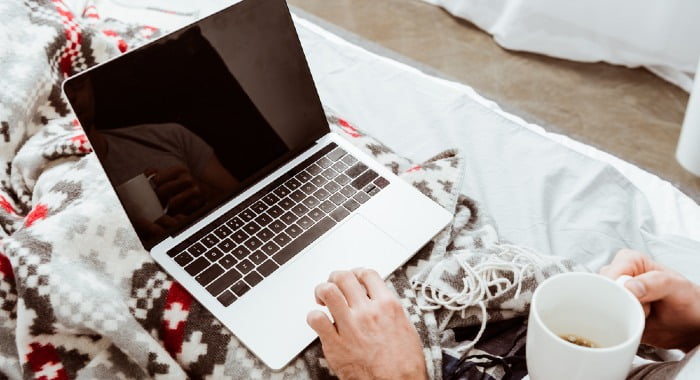
Gadgets emit blue light, which interferes with your circadian rhythm. This is your natural body clock that controls your sleep cycle. The light will make your body think that it’s not time yet for bed, delaying the release of melatonin that makes you fall asleep.
Get up if you’re awake.
If you’re awake for more than 20 minutes in bed, get up. Laying there will just make you feel more frustrated, so physically move to a different part of your house. Try doing a relaxing activity, such as making a (decaffeinated) drink, light reading or gentle housework like folding laundry.
Keep your bedroom cool.
For optimum sleep, it’s recommended to keep your room nice and cool for the night. According to Dreams, the ideal bedroom temperature is between 15.5 and 19.4°C.
Keep the peace and quiet.
Switch off the TV, put away your devices and let your room be quiet. If you can’t cope with the silence, play ‘non-threat’ sounds such as ocean waves, raindrops of wind through trees.
Ensure you’re using the right mattress.
The mattress you sleep on has a big effect on your sleep. If you’re struggling with sleep, wake up with aches or pains, or haven’t changed your mattress in over 8 years, it may be time for a new one.
Avoid caffeine and alcohol before bed.
Caffeine and alcohol have a massive impact on your sleep quality by preventing the production of melatonin. So, skip the nightcap and make sure that you aren’t drinking caffeine too late in the day.
Want any more tips? Read our sleep tips sections for helpful advice and guides to a soundless night’s sleep.
What other products can help with sleep anxiety?
As well as the above relaxation exercises for sleep anxiety and sleeping tips, there are a number of products that can help ease symptoms and give you a better nights sleep.
This includes things like weighted blankets, which are heavy blankets that are designed to add a comforting pressure to your body. As well as easing anxiety symptoms, they also help produce melatonin for a good night’s sleep.
There are many weighted blankets on the market, but to make it easier, we created a list of the best weighted blankets for anxiety that are on the market.
As well as weighted blankets, you might want to invest in sleep devices such as the following.
1. Dodow sleep aid – Our rating 9.5/10
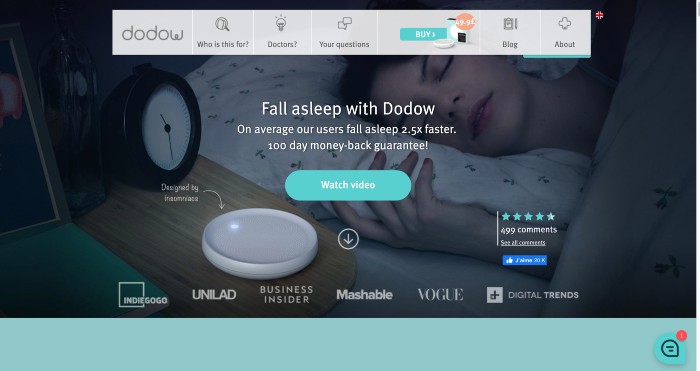
The Dodow is a sleep aid device that claims to help people fall asleep 2.5x faster. It’s a big claim but comes with a lot of scientific backing and glowing reviews in its favour.
The Dodow is a small battery-operated device that projects a pulsating, soft blue light on the ceiling. When in bed, you can concentrate your attention on this spot, using it to clear your mind and slow down your breathing.
The pulsing blue light can be set for 8 or 20 minutes before automatically shutting off, helping to save you battery through the night. It’s a natural, quiet and unobtrusive sleeping aid perfect for those who struggle to slow down their breathing on their own.
The only downside? It doesn’t tell you when the battery is low.
Our official Sleep4Beginners rating: 9.5/10.
Read our full Dodow review for more details.
2. Muse headband – Our rating 9.2/10
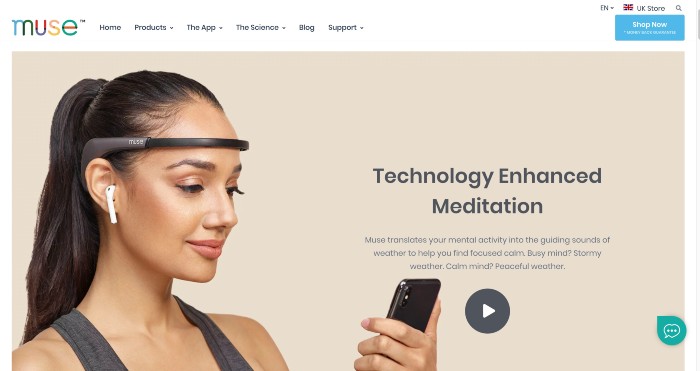
The Muse headband is a wearable mediation device that can help you relax and improve your sleep.
It senses brain waves to see how well you are meditating and offers guided mediation with real-time feedback to ensure you’re getting the best from your meditation. This is great for beginners who don’t know what they’re doing to find their feet with meditation.
It’s lightweight and simple to use with a mobile app that you install on your phone.
The downsides? This headband comes in at the pricey side for something that isn’t discreet.
Our official Sleep4Beginners rating: 9.2/10.
Read our full Muse headband review for more details.
3. Kokoon headphones – Our rating 8.7/10
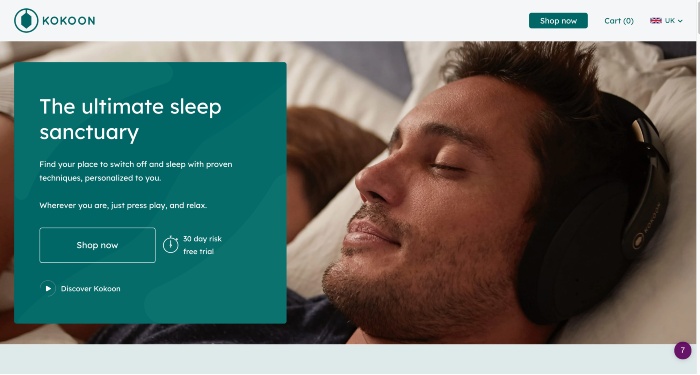
Kokoon are a set of headphones that you wear at night to help you fall asleep. They deliver smart features and audio programmes that are designed to help you relax and drift off, including sleep exercises, and scientifically designed sleep programmes.
The headphones are soft and safe to wear in bed and are also helpful if you’re sleeping next to a noisy partner. In addition, you’ll also have a 30-day free trial to see if the headphones are right for you or not.
However, wearing headphones in bed may be uncomfortable for some people to get used to and the headphones are known to have issues with connectivity. The cost is also pretty high for some budgets, so they might not be right for everyone.
Our official Sleep4Beginners rating: 8.7/10.
Read our full Kokoon headphones review for more details.
4. Sommox sleep robot – Our review 8.3/10

The Sommox sleep robot is designed to be the perfect sleeping partner for everyone who’s sleeping alone.
The robot is padded, making it soft and easy to cuddle at night. But as well as being soft, it also mimics a real breathing pattern, making it feel as if someone else is right there. This can help ease anxiety and help those who might be doing through a breakup or are missing their partner in a long-distance relationship.
In addition, the Sommox sleep robot can also play soothing noises to help you fall asleep faster. It’s customisable and programmable from the app. Just be prepared for the high price tag.
Our official Sleep4Beginners rating: 8.3/10.
Read our full Sommox sleep robot review for more details.
The best relaxation exercises for sleep anxiety
Relaxation techniques are designed to calm down your body and mind, ease the physical effects of anxiety so you can get a better night’s sleep.
If you’re currently suffering, try one of the above methods to see how it impacts your sleep. If you’re looking for other ways to improve your sleep, try the added tips above as well as the sleep aid products that can improve your night.
Still struggling with your sleep? If any of the above tips and solutions don’t work after a few weeks, it may be time to talk to your GP for more detailed advice.
